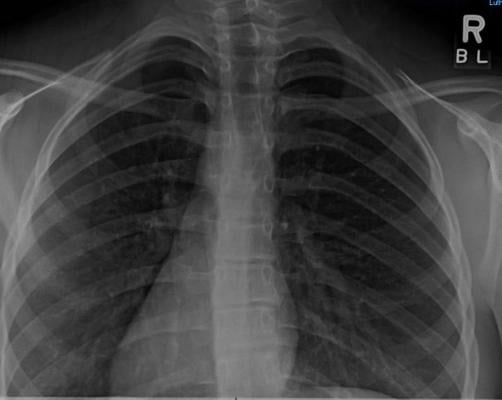
New Study Describes Imaging Findings in H7N9 Influenza
July 8, 2013 — H7N9 pneumonia is characterized by imaging findings that differentiate it from other types of pneumonia, including rapidly progressive changes in the lungs and pulmonary connective tissues, according to the first clinical study to describe radiologic findings in the disease. The results are published online in the journal Radiology.
“The severity of these findings is associated with the severity of the clinical condition of the patients,” said study co-author Zhiyong Zhang, M.D., Ph.D., from the Department of Radiology at Shanghai Public Health Clinical Center and Shanghai Medical College of Fudan University in China.
H7N9 is a recently discovered subtype of avian influenza virus or “bird flu.” Cases of bird flu infection in humans typically result from direct or close contact with infected poultry, such as domesticated chickens, pigeons or ducks, or with surfaces contaminated with secretions and excretions from infected birds. The first human outbreak of H7N9 was reported in China in March 2013. This new strain in humans has caused severe and rapidly progressing respiratory illness. H7N9 can cause acute respiratory distress syndrome, organ failure and death.
For the study, Zhang and colleagues evaluated the clinical data and radiologic files of 12 patients with avian-origin influenza A H7N9 virus who were admitted to Shanghai Public Health Clinical Center between April 3, 2013, and April 20, 2013. The 12 patients included nine men and three women, 47 to 81 years old (mean age, 66 years).
None of the patients raised pigeons or lived in or near a pigeon-infested area. One patient kept chickens at home, and four patients had gone to various farmers’ markets before the symptom onset. All other patients had no clear history of exposure to poultry. All patients exhibited fever with temperature of 38? to 40? (100.4? to 104?), cough, shortness of breath, and white phlegm and loss of strength at the onset of the disease or within one week. They rapidly progressed to severe pneumonia and acute respiratory distress syndrome.
The intervals between the onset of symptoms and the initial imaging examinations ranged from one to six days for chest X-rays and two to nine days for computed tomography (CT).
Chest X-rays were taken every one or two days thereafter to monitor disease progression and treatment response. To evaluate disease progression and possible complications, 10 of the patients underwent follow-up CT two to eight days after initial examination.
The imaging findings included ground-glass opacity (a hazy area in the lungs with the appearance of ground glass) in all 12 patients, consolidations (regions of lung tissue filled with liquid) in 11 patients, air bronchograms (air-filled bronchi made visible by swelling in adjacent tissues) in 11 patients, and interlobular septal thickening (thickening of pulmonary connective tissue) in 11 patients. Lung lesions involved three or more lobes in all cases, but were mostly detected in right lower lobe. Follow-up computed tomography (CT) in 10 patients showed interval improvement of the lesions in three patients and worsening of the lesions in seven patients. Imaging findings closely mirrored the overall clinical severity of the disease.
“The distribution and very rapid progression of consolidations, ground-glass opacity, and air bronchograms, with interstitial changes, in H7N9 pneumonia help differentiate it from other causes of pneumonia,” Zhang said.
While these imaging characteristics are similar to those found in other respiratory diseases, such as H1N1, H5N1 and severe acute respiratory syndrome (SARS), there are differences.
“Both H1N1 pneumonia and SARS distribute more peripherally, with more changes in the spaces between tissues, and progress less rapidly than H7N9,” Zhang said. “In our study, the right lower lung was most likely to be involved, while there’s no lobar predilection in findings of H5N1 influenza.”
For more information: www.radiologyInfo.org


 August 09, 2024
August 09, 2024 








